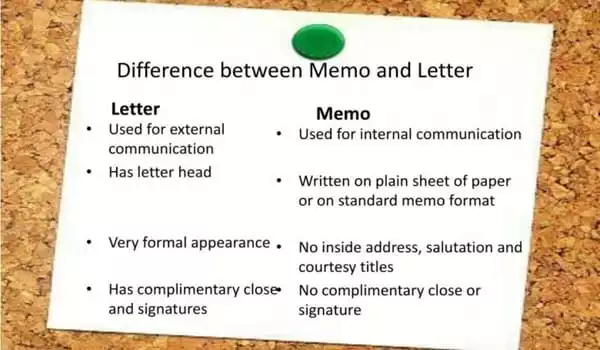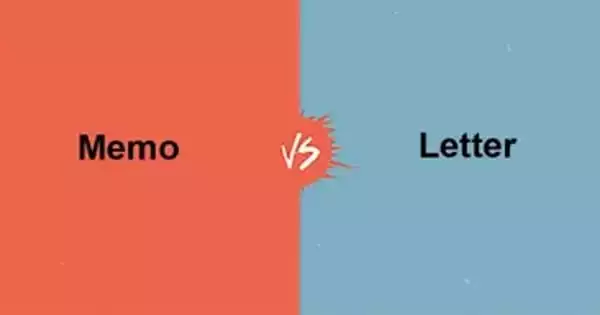A letter is a brief or long message conveyed from one person to another, whereas a memo is a short message given from one person to another. A letter is more formal and contains more information, but a memo is more informal and brief. A memo will typically contain a heading that says where it is coming from and who it is intended for, whereas a letter may or may not have this element.
Difference between Memo and Letter –
The fundamental difference between a memo and a letter is that a memo is a more informal way to communicate with people, but a letter allows for both formal and informal communication.
Despite their similarity, there are significant differences between a memo and a letter. Memos and letters are both forms of internal communication that are used to transmit messages or information. In many circumstances, they are interchangeable, although there are certain distinctions between memos and letters, which are as follows:

Meaning
- Memo: A memo or memorandum is a written mode of communication that is useful business or office. Memo used the format of notes, reports, letters, or binders to communicate between the colleagues. It typically comes in use for internal communication in a firm.
- Letter: The letter is a written mode of communication that is handwritten or printed on a white sheet. It can be sent through mail or post by letter; it is a one-to-one conversation between the parties.
Use
- Memo: A memo is used internally within an organization moving upward, downward, or horizontally. It is never sent outside.
- Letter: Whereas letters are used both for internal and external communication It has also large usage beyond the scope of an organization.
Format
- Memo: A memo does not require a return address, salutation, or complimentary close. It uses: To, From, Date and Subject heading.
- Letter: A letter requires an inside address. Salutation and complimentary close.
Content
- Memo: A memo can use technical jargon and abbreviations because their meaning is understood by the people within the organization.
- Letter: While communicating with external people through a letter, simple words are encouraged rather than jargon.
Both modes of communication are mostly used in the workplace, and the emergence of technology has made handwritten letters less popular. Until today, we had to compose a letter for bank purposes when submitting any application to the school.
Both communication approaches are equally useful because one is used for internal company communication and the other is used for outward business communication. We can now discern the difference between a memo and a letter because the primary difference has been explained.
















